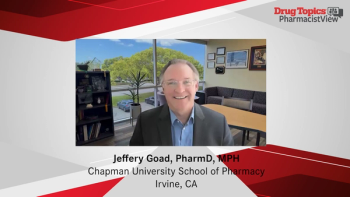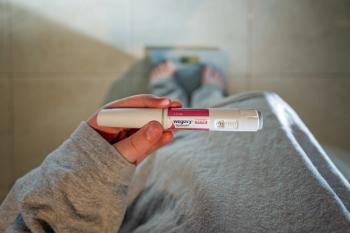
- Drug Topics August 2022
- Volume 166
- Issue 8
Managing ADHD in Children and Adults
Pharmacists’ body of knowledge is crucial in helping pediatric and adult patients select the right medication to treat their ADHD.
For years, Ritalin was the go-to methylphenidate to treat attention deficit hyperactivity disorder (ADHD). In recent years, several new intermediate- and extended-release (IR; XR) versions of the drug have come on the market, providing a variety of time-release options and easier routes of administration for patients and making pharmacists’ knowledge of these newer medications more essential than ever for their pediatric and adult patients.
These new products include methylphenidate for extended-release oral suspension and methylphenidate (Quillivant XR); extended-release chewable capsules such as methylphenidate HCl (QuilliChew ER); methylphenidate hydrochloride extended-release capsules (Aptensio XR); methylphenidate extended-release orally disintegrating tablets (XR-ODT, NT-0102, and Cotempla); and Oradour-Methylphenidate (once-daily tamper-resistant formulation).1
“When I started, we had methylphenidate [Ritalin] and [amphetamine/dextroamphetamine (Adderall)]. Now, there are upwards of 10 formulations,” Megan Ehret, PharmD, MS, BCPPP, professor at the University of Maryland School of Pharmacy of Baltimore, told Drug Topics®. “For each formulation, determining how much medication [the patient is] getting at all these different times can be overwhelming to think about. How do I know which one is best for my patients, and which one is covered by their insurance?”
Pharmacists’ knowledge of the various formulations of methylphenidate and dexmethylphenidate is crucial for appropriate medication selection for control of ADHD symptoms, according to an article Ehret penned, published in the American Journal of Health-System Pharmacy.2 “Knowledge of differences between release mechanisms and the pharmacokinetic properties [is] essential for appropriate use of these products.”
New flavored IR products allow easier administration, and delayed- release capsules, administered by the patient the night before, both increase treatment options and can help improve patient adherence, Ehret noted. And, different durations of action allow for individualization of dosing regimens for patients based on the symptoms they are experiencing.
New formulations also allow for ease of administration for those who struggle with swallowing medications.
Medications such as methylphenidate HCl XR capsules (Ritalin LA), Aptensio XR, and Focalin release a larger portion of their IR component in the morning, which can be beneficial for patients with more early-morning symptoms, while Cotempla XR-ODT and Adhansia XR provide a larger medication release later in the day, which can be helpful for those whose symptoms may extend into later in the day, Ehret explained.
“Determine the symptoms where the patient is having the most struggle,” she advised. “Do they have the most symptoms in the morning? Can we get by with some medication in the morning, or is the afternoon a struggle so we need something that lasts?” The timing of administration must be correct, so the patient can still get to sleep that night.
Sandra Mullen, PharmD, BCPP, clinical pharmacy specialist, child and adolescent psychiatry, and clinical assistant professor at Virginia Commonwealth University (VCU) School of Pharmacy and VCU School of Medicine in Richmond, agreed that pharmacists need to ask patients about their most trouble- some symptoms and the timing of their day.
“In adult patients, a lot of times we see more lack of attention, rather than impulsive [symptoms],” Mullen explained. “Talk to patients about what their day looks like...and how quickly they need the medication to work,” Mullen said. “It is also about minimizing how many times a day they need to take it; for some [medications], you have to take them 3 to 4 times a day.”
Determining the best formulation must also take into account adverse effects, such as decreased appetite, and patients’ sleep schedules. “If they have a weekend [when] they are not doing anything and they sleep in, we need to be cognitive of how many [times a day they take the medication].” Taking the medication too late in the day, she explained, means that it works later into the night and will impact sleep.
Patients also need to be aware of potential adverse effects of stimulant medication, such as increased blood pressure. “If patients feel like their heart is racing too much, make sure they see their physician to determine whether it is because of the medication or the medication has uncovered symptoms [of a heart or blood pressure condition],” Mullen said.
Insurance Coverage Decisions
As with other medical conditions, treatment decisions are never based solely on formulation alone—but are often determined by the ever-changing costs of various products, Ehret said. Some of the newer formulations, such as orally dissolving tablets or transdermal patches, are often not covered by insurance, according to Ehret and Mullen.
“There is always a concern with getting the newer medications for our patients,” Mullen said. “Most insurance companies prefer Adderall or Ritalin.”
Pharmacists often need to obtain prior authorizations from the patient’s physician stating that the patient has already tried the covered medication and is not able to take it.
For pediatric patients who have a difficult time taking medications, Mullen recommends crushing the generic Adderall or Ritalin, then mixing it in applesauce or pudding. “If it is still a barrier, then we move to newer agents that are more expensive [such as orally disintegrating tablets]. You [need to] show the insurance company that you have tried it [the covered medication],” Mullen said.
There may also be additional hurdles to clear for both pediatric and adult patients. For example, some insurance companies require annual urine drug screening for certain ADHD drugs. However, many physicians’ offices’ software systems do not have automatic reminders to provide the lab order for patients to get the urine screening, Mullen noted.
“You get a call from the pharmacy that you have to go back and do the labs and update the charts. The providers are not happy all the time... because there is a delay in treatment.”
The Challenges and Benefits of ADHD Patches
In March 2022, the FDA approved a second patch to treat ADHD, dextroamphetamine (Xelstrym).3 However, Ehret has not seen much uptake of that medication—nor of the methylphenidate stimulant patch (Daytrana) that was cleared by the FDA in 2006.
Insurance often doesn’t cover patch versions, Ehret explained. “Due to the cost, for our state’s Medicaid the provider will have to fill out a prior authorization form with the medical rationale about why they are doing the patch vs something that is available generic orally,” Ehret said.
Xelstrym takes effect after 2 hours and is applied for up to 9 hours, according to the manufacturer, Noven.
“As a once-daily transdermal patch, Xelstrym provides clinicians and their patients, many with varying daily schedules, the ability to share in the decision-making process of determining when to apply and subsequently, when to remove the patch to optimize the desired benefit of individualized treatment,” said Greg Mattingly, MD, associate clinical professor of psychiatry at the Washington University School of Medicine in St Louis, Missouri, in a statement from Noven.3
And although patches are a convenient option for adults—and patients of all ages who are unable to swallow medications—patch options can pose challenges for younger children. “If you have kids who are struggling to take pills, the patch offers another option,” Ehret acknowledged. “However, I don’t know if I would send my 6-year-old to school with it, wondering if he would take it off— or if someone else would. There are a lot of risks with kids, including swimming, heat...a lot of unknowns.”
Another concern for children is that the patch has a 2-hour delayed onset and a 2-hour delayed offset, Mullen explained. “A parent would need to put it on their child at 6AM, so it is working when they start school at 8AM.,” Mullen said.
Another reason for not using patches is that there are so many good oral medication options, according to Ehret. “We have extended-release tablets and now we have a liquid [Quillivant XR] that lasts just as long.”
References
1. Pheils J, Ehret M. Update on methylphenidate and dexmethylphenidate formulations for children with attention-deficit/hyperactivity disorder. Am J Health Syst Pharm.2021;78(10):840-049. doi: 10.1093/ajhp/zxab069
2. Cortese S, D'Acunto G, Konofal E, Masi G, Vitiello B. New formulations of methylphenidate for the treatment of attention-deficit/hyperactivity disorder: pharmacokinetics, efficacy, and tolerability. CNS Drugs. 2017;31(2):149-160. doi: 10.1007/s40263-017-0409-0
3. FDA approves once-daily XELSTRYM™ (dextroamphetamine) transdermal system, CII, for the treatment of attention-deficit/hyperactivity disorder. News release. Noven. March 23, 2022. Accessed July 24, 2022.
4. Sibley MH, Arnold LE, Swanson JM, et al. Variable patterns of remission from ADHD in the multimodaltreatment study of ADHD. Am J Psychiatry. 2022;179(2):142-151. doi:10.1176/appi.ajp.2021.21010032
5. Song P, Zha M, Yang Q, Zhang Y, Li X, Rudan I. The prevalence of adult attention-deficit hyperactivity disorder: a global systematic review and meta-analysis. J Glob Health. 2021;11:04009. doi:10.7189/jogh.11.04009
6. Attention deficit hyperactivity disorder: diagnosis and management. National Institute for Health and Care Excellence (NICE); September 2019.
7. Drug scheduling. Drug Enforcement Administration. Accessed July 25, 2022.
8. Keeping extra ADHD medication on hand. CHADD. Published April 2, 2020. Accessed July 25, 2022.
Articles in this issue
over 3 years ago
At a Glance: Interim COVID-19 Immunization Scheduleover 3 years ago
Vivjoa Approved for Recurrent Vulvovaginal Candidiasisover 3 years ago
Pharmacists Fight to Take on Opioid Use Disorderover 3 years ago
What's Coming in the 2022-2023 Flu Seasonover 3 years ago
Pendulum Ping Pongover 3 years ago
Become the Pharmacy of the Future With Technology SolutionsNewsletter
Pharmacy practice is always changing. Stay ahead of the curve with the Drug Topics newsletter and get the latest drug information, industry trends, and patient care tips.




























































































































